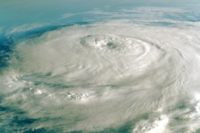 As the disaster recovery response to Hurricane Sandy begins throughout much of the Eastern United States, OSHA says its field staff is working to provide assistance and support to those involved in the recovery effort. The agency is urging workers and members of the public engaged in cleanup activities to be aware of the hazards they might encounter and the necessary steps they should take to protect themselves.
As the disaster recovery response to Hurricane Sandy begins throughout much of the Eastern United States, OSHA says its field staff is working to provide assistance and support to those involved in the recovery effort. The agency is urging workers and members of the public engaged in cleanup activities to be aware of the hazards they might encounter and the necessary steps they should take to protect themselves.
"Recovery work should not put you in the recovery room," said Marthe Kent, OSHA's New England regional administrator. "Storm recovery work involves a wide range of safety and health hazards, which can be minimized by knowledge, safe work practices and personal protective equipment. OSHA wants to make certain that no casualties result from cleanup operations."
Cleanup work can involve restoring electricity, communications, water and sewer services; demolition activities; removal of floodwater from structures; entry into flooded areas; cleaning up debris; tree trimming; structural, roadway, bridge, dam and levee repair; use of cranes, aerial lifts and other heavy equipment; hazardous waste operations; and emergency response activities.
Inherent hazards may include illness from exposure to contaminated water or food, exposure to the elements and heat stress, downed electrical wires, carbon monoxide and electrical hazards from portable generators, fall and "struck-by" hazards from tree trimming or working at heights, being caught in unprotected excavations or confined spaces, burns, lacerations, musculoskeletal injuries, being struck by traffic or heavy equipment, and drowning from being caught in moving water or while removing water from flooded structures.
Protective measures should involve evaluating the work area for all hazards; task-specific hazard exposure monitoring; utilizing engineering or work practice controls to mitigate hazards; using personal protective equipment; assuming all power lines are live; following proper hygiene procedures; using portable generators, saws, ladders, vehicles and other equipment correctly; and utilizing proper precautions for traffic work zones.
OSHA maintains a comprehensive website - www.osha.gov/dts/weather/hurricane/index.html - on keeping disaster site workers safe during hurricane and storm cleanup and recovery operations. It contains fact sheets, concise "quick cards," frequently asked questions, safety and health guides, and additional information in English and Spanish. Information on protecting oneself against heat stress while working outdoors is available in English at www.osha.gov/SLTC/heatillness/index.html and in Spanish at www.osha.gov/SLTC/heatillness/enespanol.html.
Additionally, a checklist of activities to be undertaken before, during and after a hurricane is available from the Federal Emergency Management Agency at http://www.ready.gov/hurricanes.

